Nexon is a giant of the games industry with over $1.8 billion in annual revenue, diversified across PC and mobile games in both the East and the West. The company has made some significant investments in development studios in the west, including Big Huge Games (with its mobile hit DomiNations) and Gears of War designer Cliff Bleszinski’s Boss Key productions, working on a PC shooter named Lawbreakers.
Nexon CEO and president Owen Mahoney is an experienced American executive with strong opinions about how to run a large game company. He’s been very successful during his tenure at Nexon, with the company projecting a 35 percent profit margin, reaping over $500 million in net income. Mahoney sat down with [a]listdaily before the holidays to talk about his approach to games, and in particular why he feels that games are works of art, not commodity products that you can just crank out.
“We come at it from a very particular angle,” Mahoney said. “The core principal is that games are very much an art form. You have to build great game art – you judge it on whether it’s fun or not. You think about it when you aren’t playing it, you want to tell your friends about it.” The idea that games should be seen as works of art runs counter to the prevailing business philosophy of creating sequels to established hits, adding some incremental improvements but avoiding too much innovation.
Isn’t the counter-argument to your strategy of looking for innovation and art is that it’s easier to sell incremental improvements – “This is like a game you already enjoy, only better” – rather than entirely new games “It’s hard to describe because it’s not like anything else?”
Ah, but it’s not. You’ve been in marketing – to sell a highly differentiated product, is that easy or hard? Is it easier than selling a commodity?
It’s easier creatively, but selling a commodity usually requires a big campaign and large amounts of money.
My old boss at EA, John Riccitiello, he came from Pepsi. That’s a hard marketing problem, an undifferentiated product – sugar water – in a mass market where your competition is Coke. Why is it the game industry insists on creating commodities out of pieces of art that are fundamentally not commodities?
Somebody thinks it’s less risky.
But it’s not. Everybody thinks this, but it’s not true. What you need is less commodfication of your industry. A year or so ago, I read some statistics that one-third of the approved games in Apple’s App Store were Flappy Bird clones. That puts aside all the Clash of Clans clones and all the other clones that were coming out. So why is that a bad strategy? Of course you can say “It’s just like Flappy Bird only better” but what are you doing? This gallon of oil is just like this other gallon of oil but slightly better for this reason? You’ve got no ability to differentiate. And yet we’re in the art business, which is by definition differentiated. It’s supposed to come from an artist. Id don’t find that it’s sophisticated product marketing, I find it lazy. I can’t think of a company that has sustained success using that approach. I can think of a lot of companies that have sustained success by doing the opposite. The companies that I think of are Blizzard, Valve, Nexon – these are companies that have ten or fifteen years of sustained success by doing something wildly different than what everybody else is doing.
Success can be seductive because it can lead to complacency. You’ve got a thing that’s successful, so you just keep doing it, and it’s hard to come up with something new. Look at World of Warcraft, for instance – it’s been enormously successful and now it’s in a decline that seems to be irreversible, yet it wasn’t until recently Blizzard started doing new games like Hearthstone and Heroes of the Storm that are very different from their other games.
I’d say two things about World of Warcraft; specifically, Hearthstone is a fantastic game. World of Warcraft came out over ten years ago. In our experience, you can take a game that’s over ten years old and looks like it’s one the decline and revive it so it’s bigger than it’s ever been. We’ve done that multiple times on our games.
Nexon is one of the few companies that’s had MMO’s lasting that long.
The other one is NCsoft, and we’re the largest shareholder of NCsoft. Look at Lineage I – it was the second graphical MMORPG after Kingdom of the Winds, which was our game. They were both built by the same guy. Lineage I will go up, then it will go down, then it will go up again. That’s happened with MapleStory, that’s happened with Dungeon Fighter. So I wouldn’t count World of Warcraft out.
I think the main issue I’m trying to say is the reason why people don’t do it, this is just a theory – it seems obvious to me, why would you want to sell a commodity if you had the opportunity to sell a highly differentiated product? I think the secret to the riddle is it’s really hard to make good games. It’s an art form.
Looking ahead, it seems to me the potential for the games industry is huge because as an industry we’ve been making games for teenage boys of all ages. Now some games are starting to move beyond that demographic, and with mobile devices reaching every possible demographic there’s no particular reason games can’t reach everyone. We’ve got to break out of the old tropes and try some new approaches.
Absolutely. There’s going to be new technologies, there’s going to be mobile, a lot more power, Moore’s Law affects the games industry like every other industry. The thing about exponential growth is it starts off and you don’t even notice it, and then it goes vertical, and that will affect the games industry. So there’s a lot to like there. Where is it really at? Services. These incredible experiences that you can create, that are essentially sociological and economic experiments, that are so cool. All good online games have an aspect of that, and that’s where the real fun is, in my view.
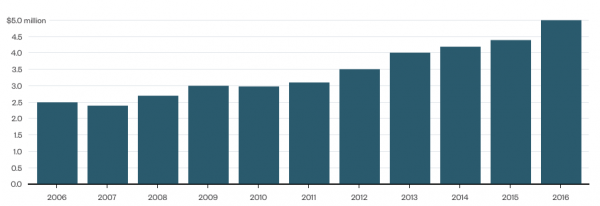 That said, a Bloomberg report indicates that the higher pricing is worth it, especially considering the 114 million viewer outreach (judging from last year’s numbers) the game usually garners – not to mention the countless fans that watch the ads online separately.
That said, a Bloomberg report indicates that the higher pricing is worth it, especially considering the 114 million viewer outreach (judging from last year’s numbers) the game usually garners – not to mention the countless fans that watch the ads online separately.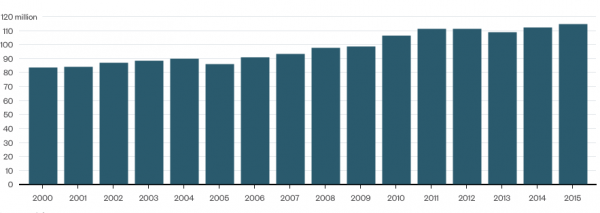 With CBS also airing the game digitally, an even bigger audience is expected, and we could be seeing an interesting trend for the Super Bowl over the next couple of years as spending on digital advertising eclipses regular advertising. The “big game” interest is still going to be there, but there could be a bigger interest in how many people are watching online compared to just TV.
With CBS also airing the game digitally, an even bigger audience is expected, and we could be seeing an interesting trend for the Super Bowl over the next couple of years as spending on digital advertising eclipses regular advertising. The “big game” interest is still going to be there, but there could be a bigger interest in how many people are watching online compared to just TV.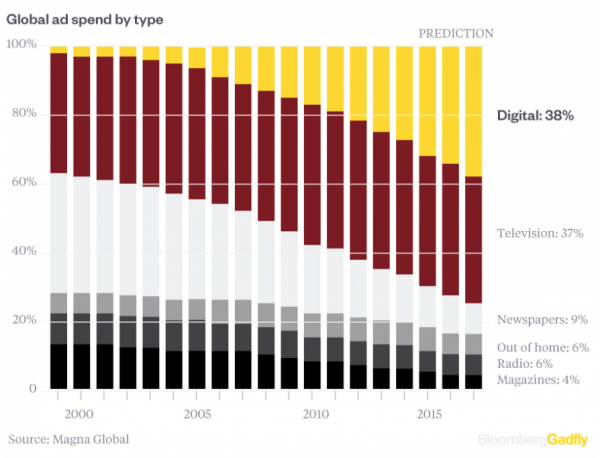 Cost could play a part in this advertising game as well, as the below chart indicates just how much is paid per viewer in terms of thousand impressions. Network TV still leads significantly over in-stream video, although, again, this could possibly change.
Cost could play a part in this advertising game as well, as the below chart indicates just how much is paid per viewer in terms of thousand impressions. Network TV still leads significantly over in-stream video, although, again, this could possibly change.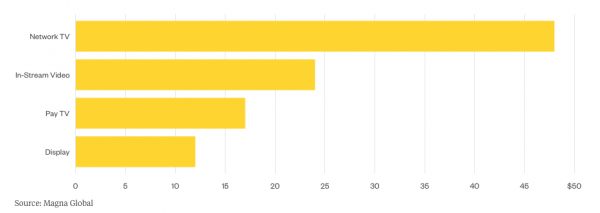
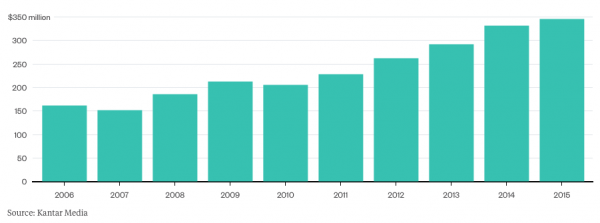
 Last year, CCP stated a goal of building the world’s first AAA-quality game for VR, but EVE: Valkyrie seems to have picked up a few rivals, with more to come. In what ways will the game continue to stand out?
Last year, CCP stated a goal of building the world’s first AAA-quality game for VR, but EVE: Valkyrie seems to have picked up a few rivals, with more to come. In what ways will the game continue to stand out?